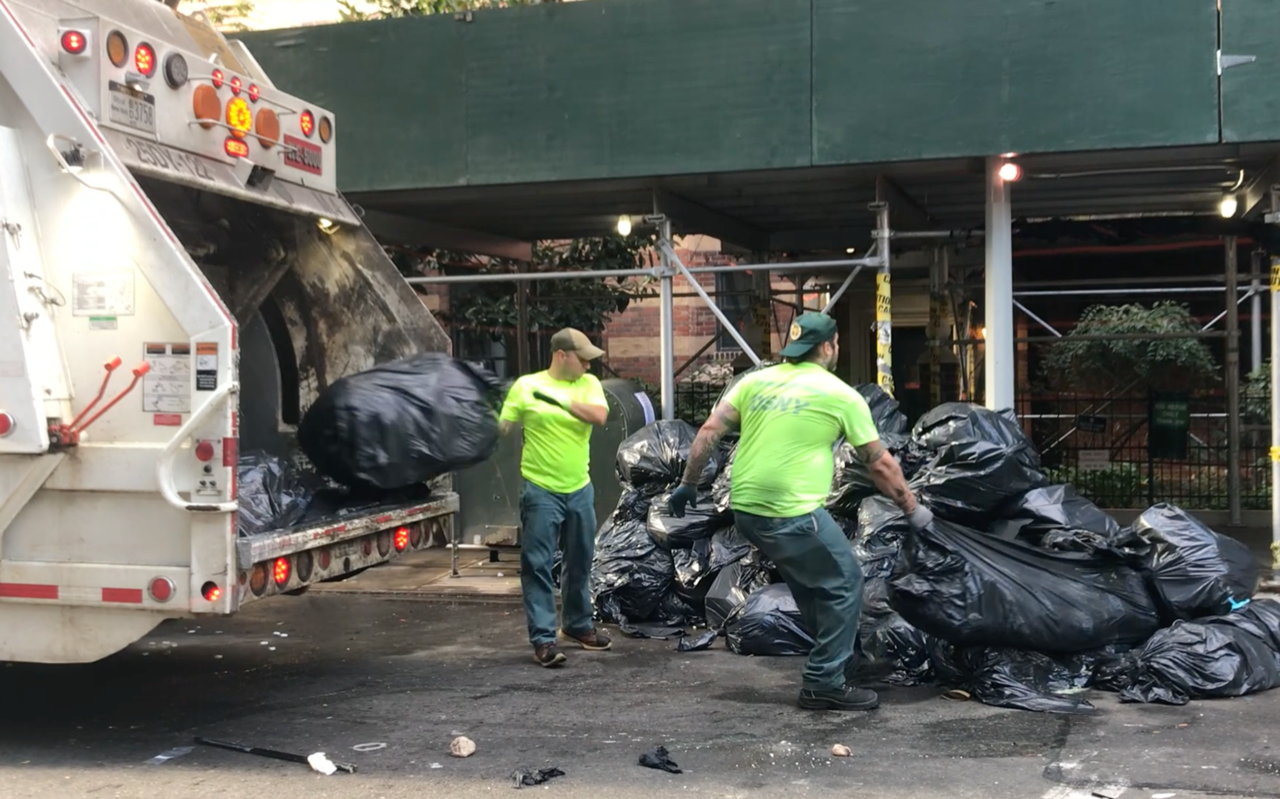
Getting food waste out of the trash is essential to reaching New York City’s climate, livability, and equity goals. Nevertheless, despite campaign promises Mayor Eric Adams’s preliminary budget would yet again halt expansion of curbside organics collection and leave successful community compost nonprofits fighting for their survival.
Here’s what makes this is a such a vital issue. Close to half the trash City Sanitation crews collect is food waste. Sealed in bags, it putrefies, attracting rats, leaking garbage juice, and leading to litter-strewn streets. Problems are much worse in under-resourced buildings, where lack of regular trash chute cleaning leads to cockroaches and over-use of pesticides, exacerbating asthma and other health issues. Neighborhoods with fewer building staff to clean sidewalks, and no business improvement district cleaning crews also suffer more litter and rats, a physical and mental health issue. Most of our trash is then transported to landfills up to 600 miles away.
We spend $1.5 billion annually on this outdated, inefficient system, when a third of our waste could instead be affordably turned into a valuable resource for the city: Compost.
The City actually got off to a strong start in turning the system around in the early 1990s, with curbside collection of fall leaves and a composting facility for yard waste. It also launched the NYC Compost Project, which includes education carried out by community organizations who also run local food scrap drop-off sites and provide high-quality compost for community gardens, schools, and residents.
Curbside collection of household organic waste began in 2013, with pilot programs in Brooklyn and Staten Island. But just as the program was supposed to go citywide in 2020 it was instead suspended entirely when the Covid-19 pandemic drastically cut City revenues. Last fall, curbside collection was partially restored as a voluntary, opt-in program with a plan to increase it month by month.
Now, however, in the name of saving $18.2 million, the mayor proposes to shelve such expansion while also halving funding to community compost programs.
The continued stopping and starting of organics programs will never allow them to improve and grow. At present, low participation rates and inefficient collection do indeed make the cost of collecting separated organic waste seven times higher than if it is mixed in with refuse. If half the organics were collected, however, the cost differential should disappear.
Moreover, a current siloed approach, where the Parks Department threatens eviction of long-term successful community compost nonprofits funded through the Department of Sanitation, is clearly counterproductive.
Instead, the mayor needs to think long term, commit to organics collection, get City departments on the same page, and develop a range of collection plans that fit specific neighborhood needs. In short, it’s time to rethink and modernize the City’s waste collection system.
We can, for example:
The City Council should provide funding to pilot, evaluate and fine tune such innovate strategies. The Council will also need to approve the City’s upcoming Solid Waste Management Plan, due in 2024. It should require that the Mayor’s Climate Leadership Team lead its development and ensure that it includes a path to efficient organics collections.
In the meantime, it also should increase funding to expand food scrap drop-offs and community composting, while requiring evaluation of the educational, health, and resilience benefits of community composting and gardening.
And as for the Adams administration’s desire to reduce City agency spending by rooting out inefficiencies: Instead of putting curbside organics collection in suspended animation, what about cutting back on three times a week garbage pick-up for low-density residential blocks in my neighborhood?
CLARE MIFLIN IS THE FOUNDER OF THE CENTER FOR ZERO WASTE DESIGN.
PHOTO BY: CLARE MIFLIN
There's no previous post
Back to PublicationsThere's no next post
Back to Publications